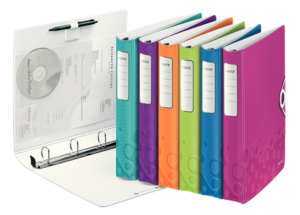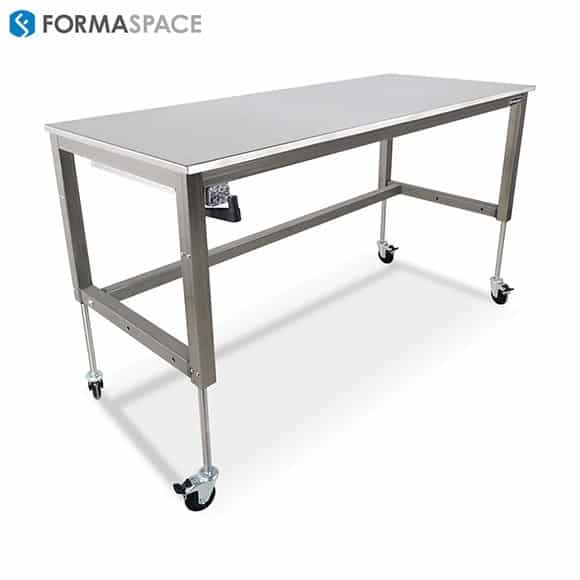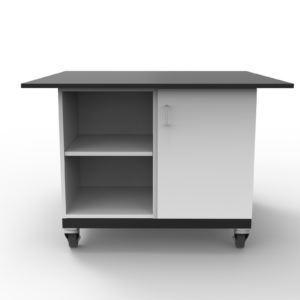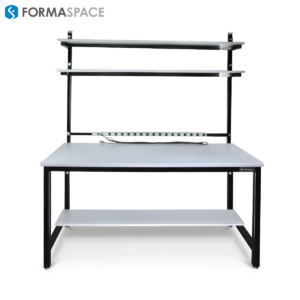Has 2016 been a productive year for you? Perhaps you’re looking for ways to be more effective without increasing the number of hours you work. Check out 15 ways you can work smarter in 2017.
As the year 2016 comes to a close, you’re probably thinking “That was fast — where did all the time go?”
That’s a good question: where does all our time go? Are there ways we can learn to manage our time by working smarter and being more productive?
The answer is yes. You can improve how you manage your time. You can also learn to accomplish more with less effort. How? We gathered 15 different time management concepts that will help you become more effective at managing your time – by being more organized and efficient at work.
1. Respect Your Time
Time is a limited resource. There are only so many hours in a day and so many years in a lifetime. But are you really respecting your time and the time of others? Do some research:
- Create a time diary that tracks how you spend your day. Look for time leaks and other trends that you may want to address.
- Create a daily performance checklist and grade yourself each day. Did you meet your work goals? Did you eat right and take your vitamins? Get enough exercise? Get enough sleep? Make time for family?
- Respect the time of others. For example, start your meetings on time; even if some are late (don’t be that late person!)
- Don’t commit to something you know you can’t do. It’s better to say no up front.
2. Categorize and Prioritize
Read the book “Getting Things Done” by David Allen. Published in 2001, this book (often referred to as GTD) was one of the first to addresses practical ways to use technology to improve your productivity. Some key points to consider:
- Don’t let your email inbox be the ‘to do’ list that rules your day.
- Instead, you need to extract a list of individual bite-sized projects from your email inbox that you can complete in a reasonable amount of time.
- Categorize projects and prioritize them. Track due dates in a calendar; track your deliverables in a ‘to-do’ list.
- Don’t feel guilty about using paper ‘to-do’ lists and calendars. For many people, it’s more productive than using software. Find what works best for you.
- Carefully document and archive completed projects to avoid reinventing the wheel next time.
3. DRIFT: Do it Right the First Time
Have you heard the acronym DRIFT? It stands for Do it Right the First Time. Craig Jarrow has a good list of 10 things you should do right the first time.
Here are some points to consider on this topic:
- Don’t get to 99% completion and stop. Finish and clean up as you go.
- If you touch something (like an incoming email or piece of mail), avoid setting it aside for later. Instead, you should respond to it right now (even if it’s to categorize or prioritize your to-do list and calendar) or give it to the right person who can address the issue (and track it).
4. Use Technology to Help You Become More Productive
Technology can be a double-edged sword. Sometimes it gets so complicated or changes so fast that we can end up spending too much time trying to shoehorn the way we want to work into someone else’s software paradigm. Here are some ways to take control:
- Once again, don’t feel guilty about using paper forms, diaries, or calendars to stay organized.
- If you go the software route, choose robust, well-tested software that will be around a while, such as the calendar from Google or the ‘to-do’ list Reminder application from Apple. For maximum productivity, set up all your computers and devices to synchronize automatically (even if you have to hire a tech consultant to get it working).
- If you use chat software like Skype or Slack in the workplace, you can potentially avoid a lot of meetings yet still stay in touch with your co-workers. This approach might allow you to establish a couple ‘no meeting days’ in work each week, allowing everyone to concentrate on completing their projects.
5. Avoiding Technology Time Sinks
As you learn to categorize and prioritize, you’ll soon determine that lots of incoming email and posts from social media are urgent, but not that important. Keeping up to date with the very latest phone or software version can also lead to unproductive downtime – better to be on the proven, trailing edge of technology than on the bleeding edge.

Consider turning off all social media (including alert chimes) except for chat software (such as Skype) that you use for communicating with your colleagues during work hours. If you are addicted to social media, save it as an incentive or reward during breaks.
6. How to Work away from Work
Each individual and work situation is different. As you have certainly noticed, the Internet and connected devices allow many of us to work from home or even the local coffee shop.
What’s the attraction of working in a coffee shop? For many of these mobile warriors, the ambient white noise actually helps them think. Want to create this environment at your home or office? Use apps like Coffetivity to re-create the noise and clatter of the coffee shop at your desk.
If working in a coffee shop makes you more productive, don’t overlook some of the safety and security issues. If you are traveling and don’t have a dedicated IT department that can set up a virtual private network for you, LogMeIn software is easy to set up and not very expensive. Logmein software also allows you to retrieve files from your home office while at work or vice versa (saving an extra trip) and it can make using the Wi-Fi at your local coffee shop much more secure.
If you’re working with secure data, make sure to install software that can track your computer. If it is lost or stolen, you may need to wipe the data remotely to prevent it from reaching prying eyes.
Finally, consider creating unique setups for different projects. If you have several major projects running in parallel, it might be prudent to invest in a dedicated computer and desk for each project, so you’re not spending so much time switching between different files.
7. Design Your Own Clean, Well-Lighted Place to Work
Treat your workspace with respect. Make sure you have a safe, secure desk (ideally a motorized sit-to-stand desk from Formaspace) and that your chair, monitor, and keyboard are set up for ergonomic, comfortable use.
Consider investing in organizers for all your office supplies, like pens, highlighters, paper clips, etc. Give your devices a home too, ideally with a wireless charging station built-in to your desk surface. (Ikea offers these if you don’t have one.)
Make sure you have appropriate task lighting that is easy on the eyes. Avoid flickering fluorescent tubes that can cause eye strain. You might also want to investigate the cool Kontour monitor stands and ergonomic seating from Sitmatic we saw at the NeoCon East contract furniture show recently.
If you are having trouble with how to keep your clutter organized, you might want to turn to a professional organizer, like Marie Kondo, who has a strict Zen-like minimalist approach to organizing spaces. Ms. Kondo doesn’t believe in retaining ANY paper, but that’s not realistic in a work environment, so we’ll address that next.
8. Handle Paper More Effectively
For many of us, our desks tend to be taken over by paper — stacks of incoming documents, catalogs or notes or reference materials pile up on our work surfaces to the point we cannot get anything done.

- Buy an inexpensive magazine box and a clipboard for each project you have. Mark the name of the task or project on the front or back of the magazine box. Do the same on the clipboard. Store the clipboard in the magazine box.
- When it comes time to file new materials for that project, slip them into the corresponding magazine box. Any loose sheets, such as meeting notes or printouts, can be retained on the clipboard. If you’re running to a meeting, you can quickly grab the relevant clipboard with all your notes on it without having to look through a tall pile of papers in your inbox.
- As stages of your project come to completion, you can clean out the magazine box to archive important papers into a traditional file cabinet or throw away papers that are no longer needed. If the project is complete, you can archive the whole magazine box.
9. Take a Break
We’ve written several articles about the importance of changing your position during the workday — it’s bad for your health to sit for too many hours at a time. Be more productive by working at a Formaspace sit-to-stand desk — it allows you to change your position from standing to sitting throughout the day.
It’s also important to take a break from work. Vacations can help you relax, and time away can actually help you solve problems, gain insights as your sub-conscious mind relaxes while you are camping, visiting a museum or traveling overseas.
Exercising and eating right can have a big positive impact on your personal productivity. Don’t overlook your blood pressure; many of us may have high blood pressure but don’t realize it. Not only can hypertension lead to cardiac arrest or stroke, consistently high blood pressure can reduce your mental acuity at work.
10. Ask the Big Questions: Do You Find Joy in Your Work?
Speaking of vacations, time off away from work provides an excellent opportunity for self-reflection.
Are you satisfied with your career? Are you satisfied with your current work? If the answer is a ‘maybe’ or ‘definitely not,’ what changes could you make to either become re-engaged with your chosen career or make your specific job function more rewarding and inspiring?
Don’t overlook the role that volunteering or hobbies can play in helping you achieve some of your personal goals that might not be satisfied at work.
11. Does the Work You Are Doing Contribute to the Bottom Line?
Here’s another big “what is my role in the universe?” kind of question:
What can you do when you’ve increased your personal productivity significantly, but for some reason, it doesn’t seem to make things more efficient at the company level?
In other words, while you might have ‘upped your game’ and become much more productive as an individual contributor, your impact on the overall company is less apparent.
The answer could be that the company needs to find ways to become more productive as well.
There are, of course, quite a few ways to evaluate and improve work performance at the company level — far more numerous than we can address in this article! But here are some examples that come from the manufacturing world:
Formaspace is regularly brought in as a consultant to perform a Rapid Plant Assessment or lead a 5S program (made famous by Toyota’s production line). Other well-known frameworks designed to improve corporate performance that you might want to investigate include Six Sigma or SCOR from the APICS Supply-Chain Council.
12. Motivate Those Helping You Become More Productive
Most of us don’t work in a vacuum; we’re part of a team that works together to produce results.
One of the most effective ways to become more productive is to learn how to be better at inspiring others to help us.
As it turns out, were asking for help from other people all the time:
- When we send emails to our coworkers asking for help with a project.
- When we stand up at a sales meeting with a Powerpoint presentation about this year’s sales goals.
- When we train new employees how to follow procedures.
A new book from corporate trainer Julie Dirksen, called “Design for How People Learn”, can teach you to create more effective messages (using storytelling techniques) that will help you break through the clutter of boring presentations and endless emails to engage fellow employees who can help you become more productive.
13. Get Feedback
Do you think you’re very productive? One way to find out is to ask your coworkers what they think.
If asked the right way, they might give you some very specific feedback on ways that you could be more productive in your daily job.
You might also want to solicit more feedback from your manager or ask for additional questions about productivity or ways you could improve during your regular reviews.
Hiring a coach to improve your productivity at work is another option. Experienced career coaches can help you identify and improve your work habits.
14. Be Prepared for a Technology Meltdown
As the Boy Scouts say, Be Prepared. What would you do right now if one of the followings happened?
- Your phone was stolen at the airport, and worse yet, it’s your only source of contact information.
- Someone walked off with your laptop computer at the coffee shop. It has client data on it.
- Your email or website was hacked into.
- Your desktop computer is locked up with a ransom virus.
- Your Microsoft Outlook file is corrupted, and you have not backed up your email for two years.
Depending upon your industry and the type of data at risk, the consequences of these different scenarios could range from a “talking to” by the boss for a “rookie mistake” to a CLM (e.g. career limiting move) to a major corporate crisis with legal consequences.
The moral? You can’t be very productive at your job if you don’t have technology and security plan in place to keep your workplace information secure (and in more than one location).
15. Bouncing Back From Mistakes
Our final tip for increased productivity is the need to keep a positive attitude, even in the face of a setback or mistake.
For most of us, it’s difficult to accept negative feedback, and even worse to find out that we may have made a serious error or caused harm to others due to neglect on our part.
Mistakes happen. Seek forgiveness. Accept the consequences.
Don’t stay in a depressive funk when a mistake has occurred, pick yourself up and figure out a way to move forward.
Formaspace is your Reliable Partner for a More Productive 2017
Here at Formaspace we don’t just talk about working smarter, we deliver.
Did you know that 99% of our orders ship on time and 67% of our orders ship out early, typically by a full seven days before they were promised to our customers? That sets us apart from the rest of the workbench industry, which, on average, ships 20% of their products late – well after the date they were promised to their customers.
Delivery dates that you can count on are just one of the reasons leading companies of all sizes, ranging from Fortune 500 giants like Amazon, Apple, Boeing, Dell Computer, Google and Quest Diagnostics, to major privately-held companies, like McMaster-Carr Supply Company, to small businesses — or individuals (like you!) – choose Formaspace.
Why not contact one of our friendly Formaspace Design Consultants today? They are ready to help show you the many ways you can work smarter in 2017.










